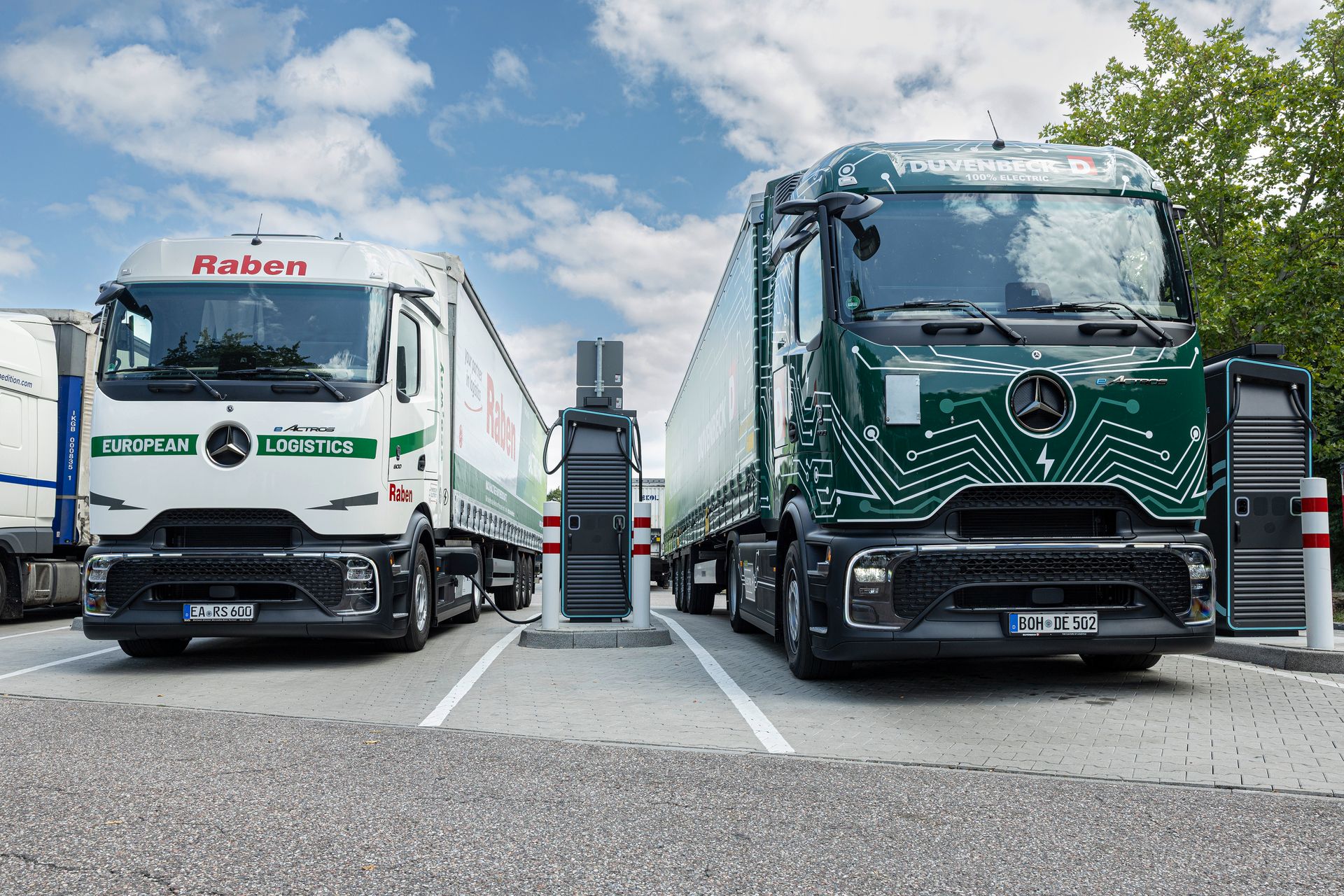Amazon ordered 200 eActros 600s. Simon Loos secured 75. Nanno Janssen GmbH just added 5 to their fleet, with 5 more on the way. DHL signed for 30 units through hylane's "Transport as a Service" model. In Italy, 30 are being used for Lidl Italia via LC3 Trasporti.
Since sales began at the end of last year, Daimler has already recorded 2,000 orders for the eActros 600.
So naturally, when I met Max from Daimler Trucks at EVS 38, I had to ask: What has Mercedes done right? After this exclusive interview, I understand why major fleets are placing these massive orders.
It's Not Just Another Electric Truck
The eActros 600 isn't just another electric truck, it's the first one, at least in Europe, that actually works with how logistics operates in the real world and delivers on the sustainability promise fleet managers need.
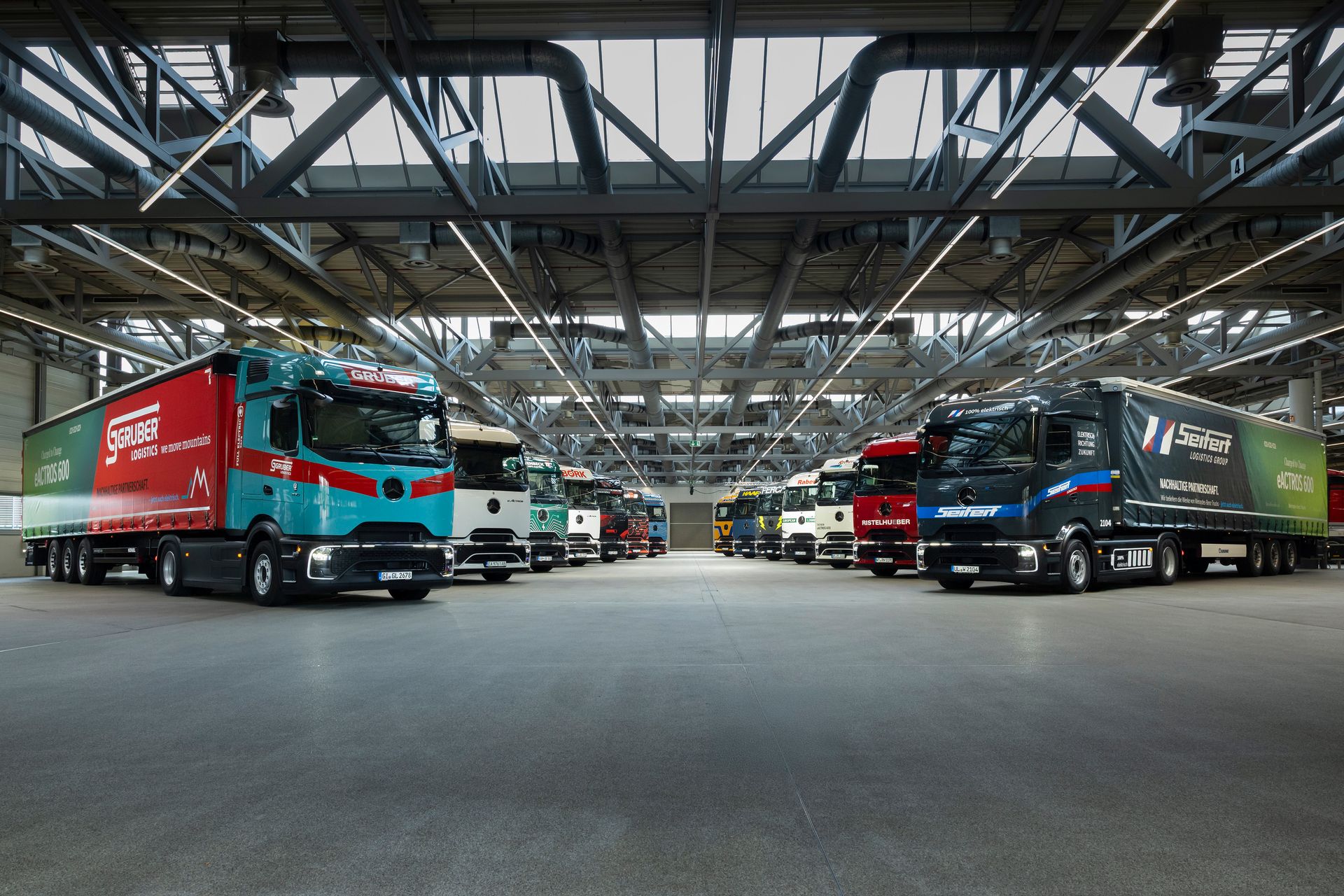
14 eActros 600 Ready for Delivery (Daimler Truck)
Here's what Daimler figured out perfectly:
Cost savings potential is clarified extensively against diesel trucks
Charging has been synced with mandatory driver breaks (45 minutes)
Fleet managers care more about consistency than peak performance
Real sustainability requires lifecycle thinking, not just zero tailpipe emissions
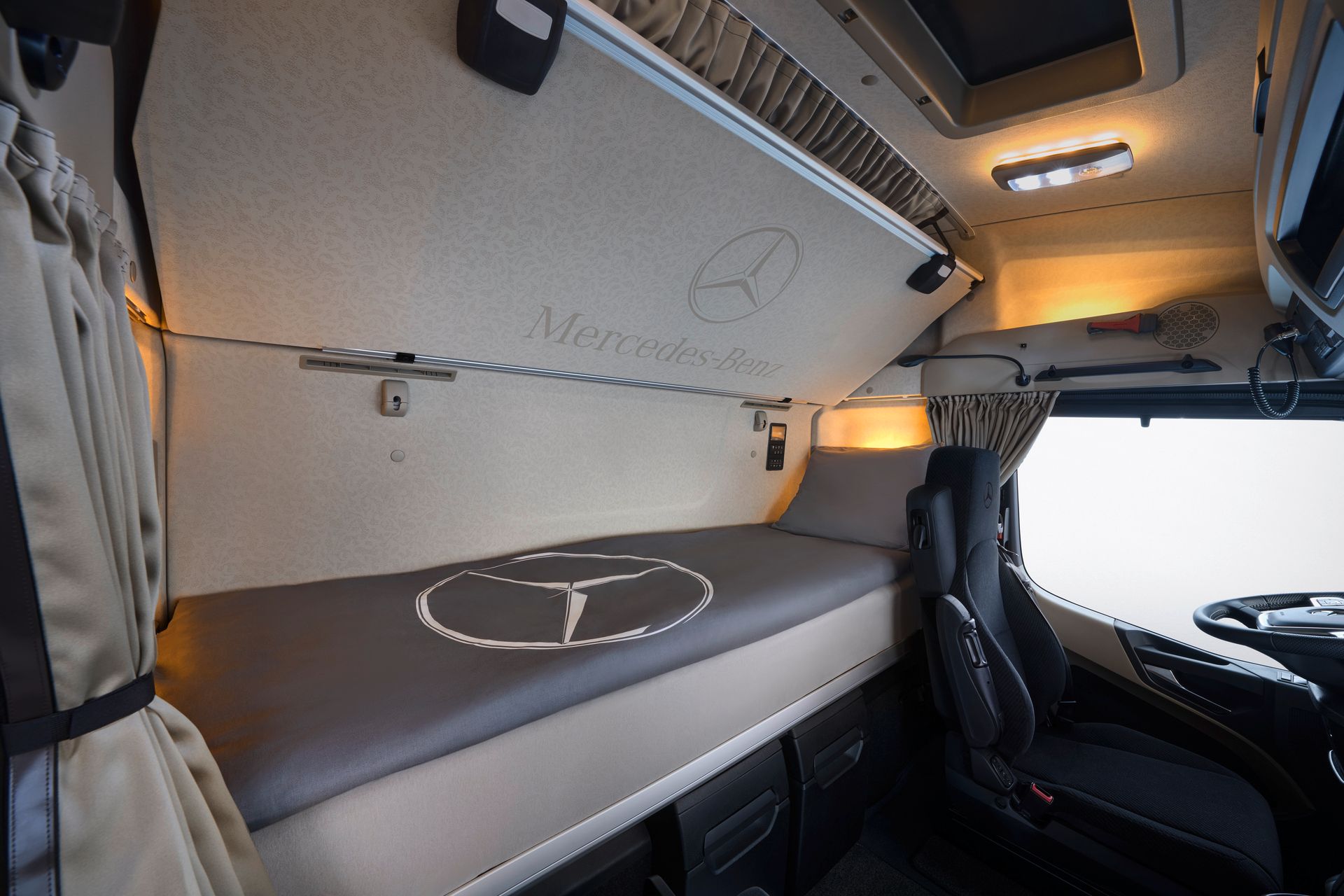
Sleeping Space eActros 600 (Daimler Truck)
Breaking the Range Barrier
The headline numbers are genuinely impressive: 500 kilometers of range on a single charge with a fully loaded 40-ton truck. This addresses one of the biggest concerns in electric trucking: range anxiety.
"The first real long-haul truck that we are introducing mainly for applications in Europe," Max explained as we stood in front of the imposing vehicle. "500 kilometers of range are possible, fully electric on one charge, and that is with a 40-ton truck."
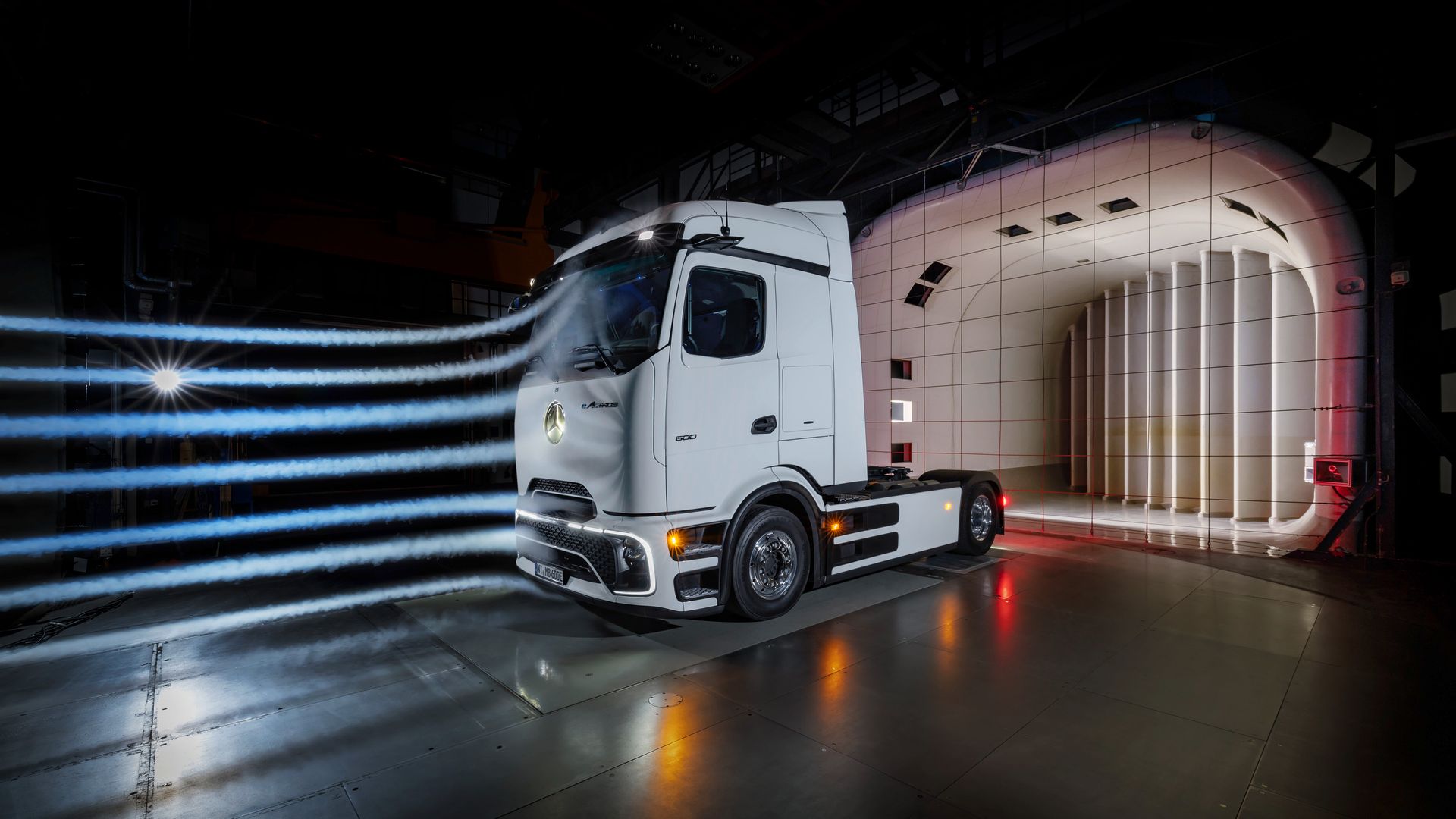
Aerodynamic Testing eActros 600 (Daimler Truck)
But these aren't just lab numbers. Daimler proved it works in the real world with their ambitious eActros 600 European Tour, a 45-day journey across 22 countries where two near-series prototypes covered over 15,000 kilometers each, fully loaded at 40 tons, charging exclusively at public infrastructure. The tour that stretched from Norway's North Cape to Spain's Tarifa, the northernmost and southernmost road-accessible points in Europe.
But range is only half the story.
Real-World Validation: Consumption Numbers That Matter
The European Tour delivered the kind of data fleet managers actually need. The specially instrumented prototype achieved an average consumption of 103 kWh per 100 kilometers over the entire 15,000+ kilometer journey.
Even more impressive was the efficiency range across different conditions:
Best case: 85 kWh/100km during the downhill Madrid to Bilbao route under optimal conditions
Worst case: 140 kWh/100km from Alta to North Cape in 7°C temperatures on unpaved roads
Recuperation bonus: 25% of drive power recovered through regenerative braking on average

15,000 trip Across EU with eActros 600 (Daimler Truck)
Environmental Impact and Energy Mix Role
Beyond the impressive range and real-world consumption data, there are sustainability and economic numbers that explain why major fleets are placing these massive orders.
Yes, the eActros 600's production generates 98,845 kg of CO2eq – more than a comparable diesel truck due to battery manufacturing. But this initial investment pays off remarkably quickly on the road.
According to Daimler's data, the CO₂ payback period, the point at which the eActros 600 becomes cleaner than a comparable diesel truck, is reached after just 100,000 km (when using 100% renewable electricity) or 195,000 km(with the current EU average energy mix).
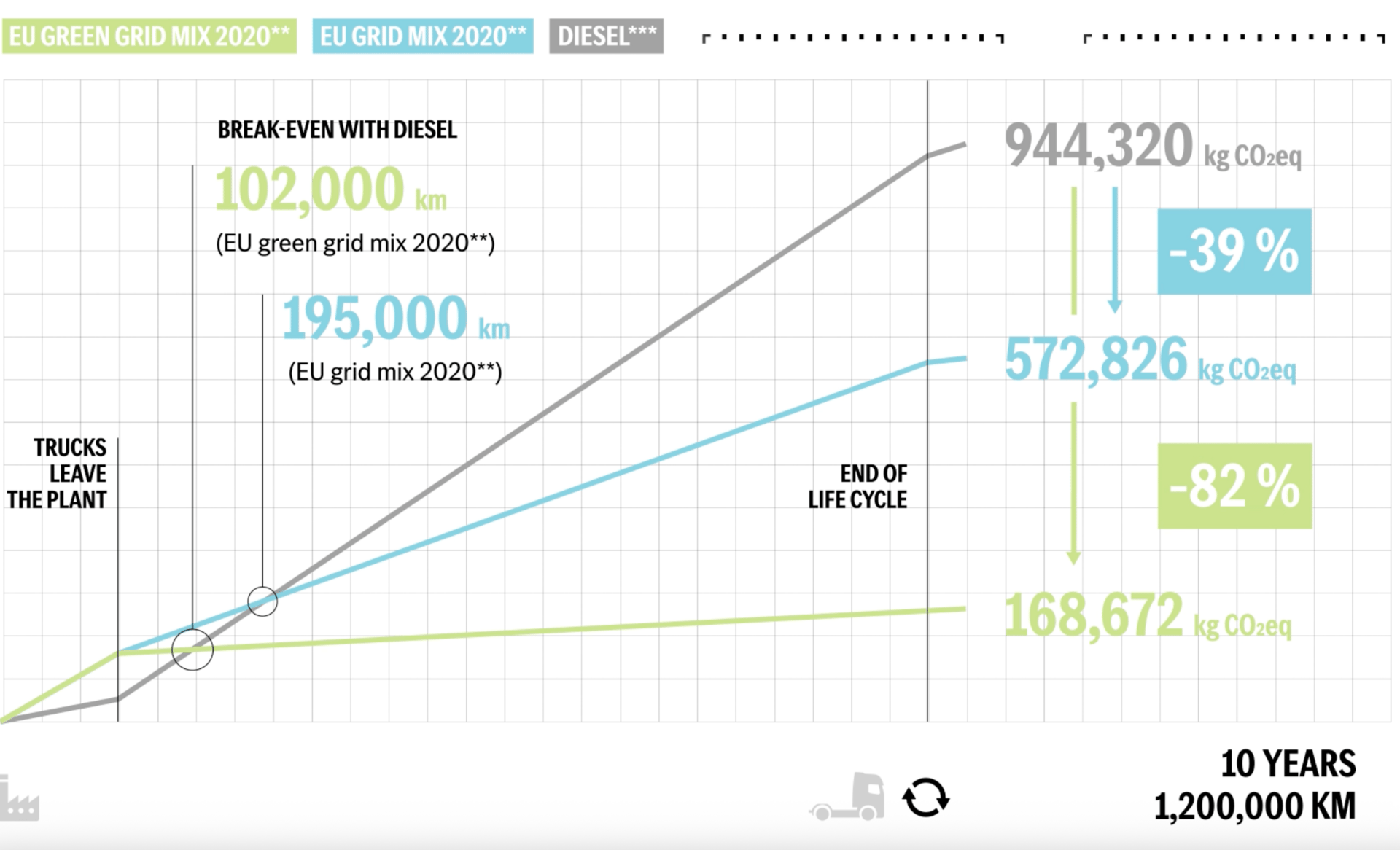
CO2 Emissions Comparison: Electric Truck vs Diesel Truck (Daimler Truck)
The math works out beautifully: after the break-even point, every kilometer driven represents pure environmental benefit.
Here’s a fascinating insight: the same eActros 600 truck can result in vastly different CO₂ savings depending on where it operates. Why? Because electricity generation methods vary country by country.
Just take a look at these two real examples:
In Germany, using its current electricity mix, the eActros 600 saves around 26.7 tonnes of CO₂ annually i.e 26% reduction vs diesel.
In Norway, where hydropower dominates, the savings skyrocket to 99.3 tonnes per year i.e. a staggering 96% reduction.

eActros 600 CO2 Savings with Germany’s Energy Mix (Daimler Truck)
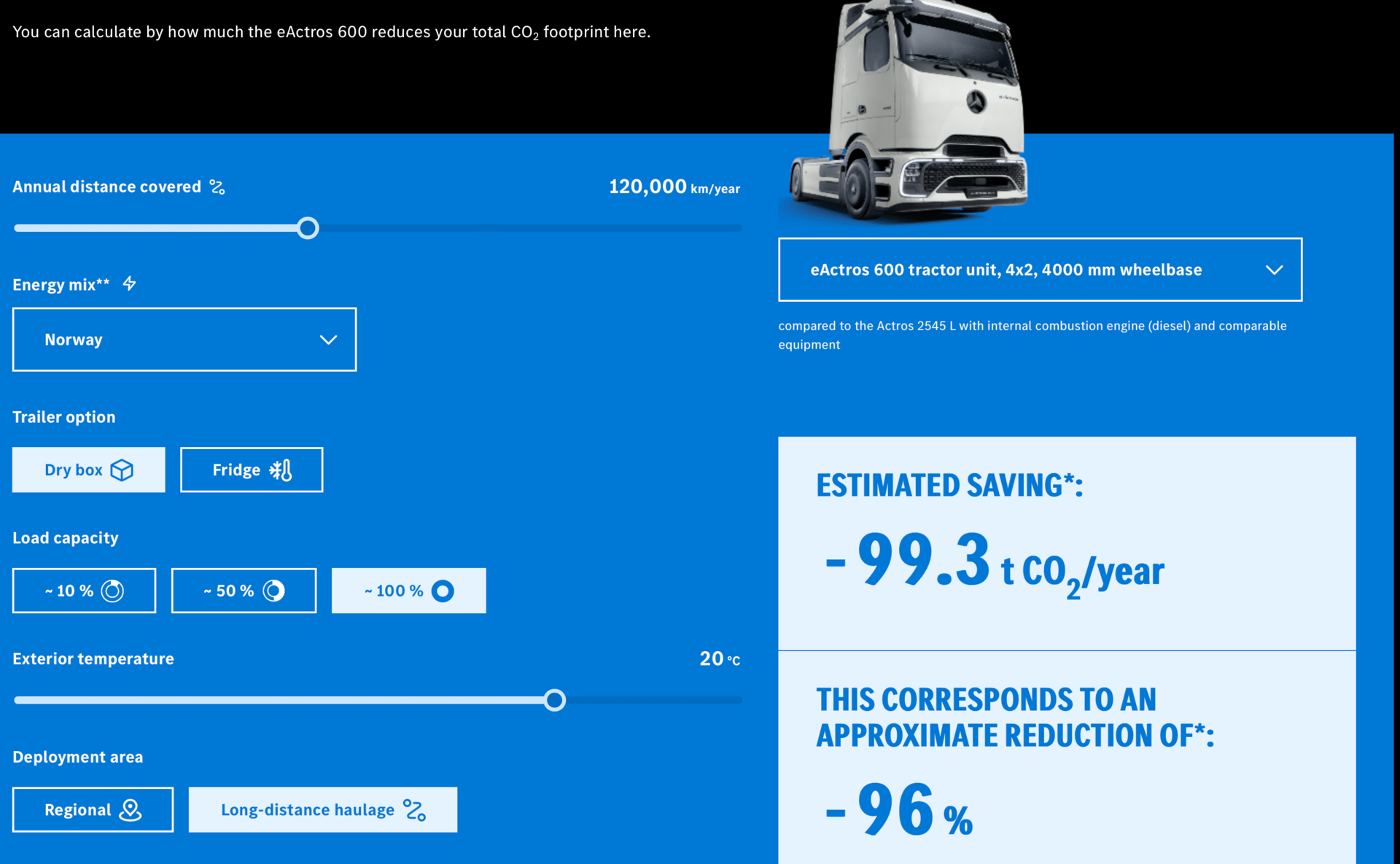
eActros 600 CO2 Savings with Norway’s Energy Mix (Daimler Truck)
This shows that true sustainability doesn’t stop at the tailpipe. it’s about how we generate, distribute, and use electricity.
Charging That Actually Works for Truckers
What sets the eActros 600 apart isn't just how far it can go, but how quickly it can get back on the road. The truck supports 400 kW charging, but here's the crucial difference from passenger cars: it maintains this peak charging rate for extended periods.
"The charging curve is really more of a plateau and not a curve," Max emphasized. "It goes up to 400, stays at 400 kW for quite a long time, and only then goes down at the end of the charging cycle."
This plateau design means drivers can predictably calculate exactly how much energy they'll add during their mandatory 45-minute break. Speaking of which, the timing works out perfectly: 10-80% charging takes about 70 mins, meaning drivers can significantly top up during their required rest periods.
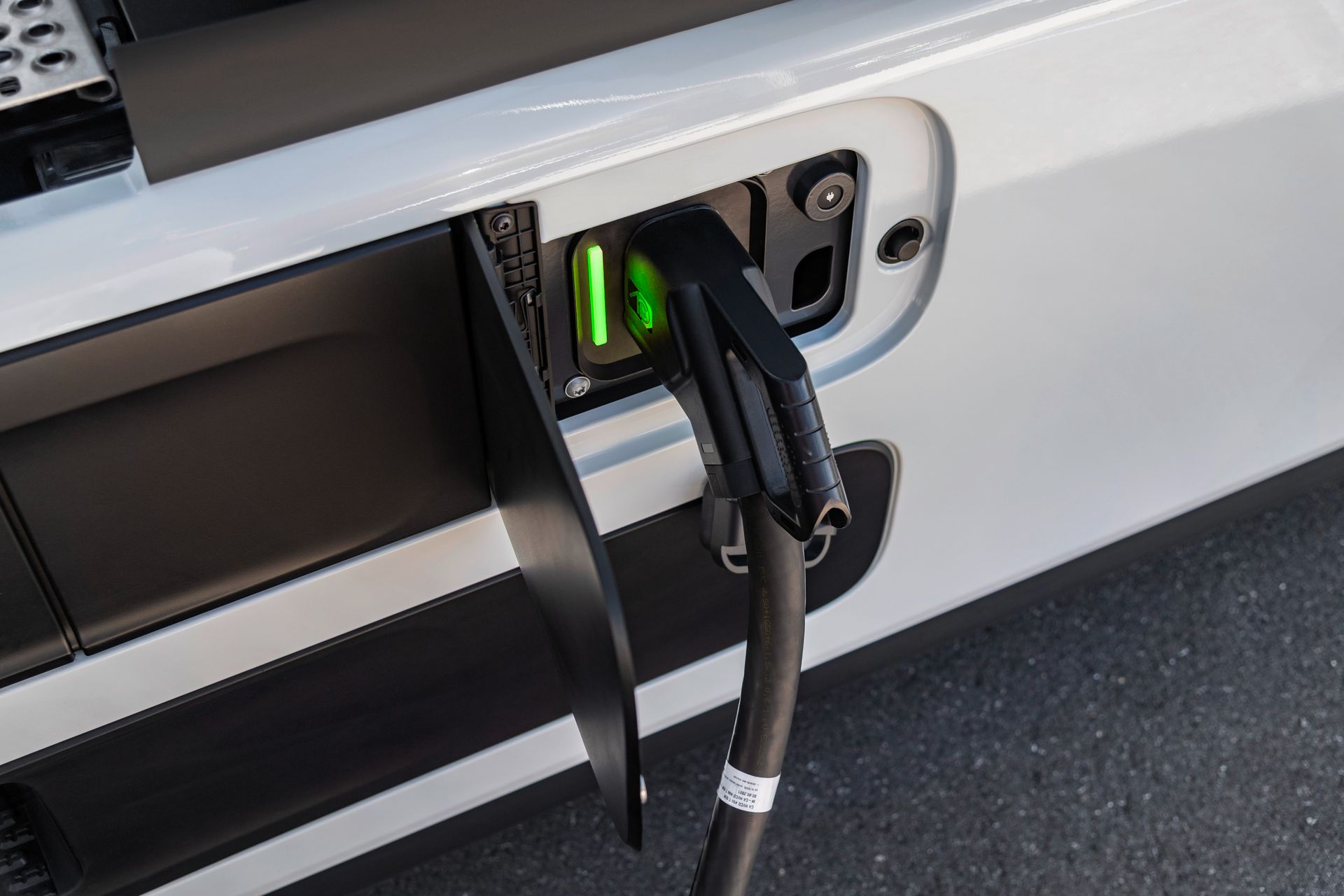
eActros 600 CCS Charging Port (Daimler Truck)
The Technical Foundation
The eActros 600 is built on an 800-volt architecture with LFP (Lithium Iron Phosphate) batteries. The truck is composed of 3× 207 kWh battery packs, the available battery capacity is 621 kWh, however the usable capacity is 600 kWh and hence the name eActros 600.
Daimler has integrated the electric motors directly into the axle, eliminating the traditional driveshaft and creating what Max called "a fully integrated electric axle."
But here's what really sets this apart for fleet operators: the warranty structure. Daimler offers comprehensive coverage with the entire vehicle warranted for 12 months with unlimited mileage, the ePowertrain for 36 months or 360,000 km, and the high-voltage batteries for a remarkable 72 months or 720,000 km (or 1,800 charging cycles).
A Complete Electric Portfolio
The eActros 600 represents the flagship of Daimler's electric truck lineup, but it's part of a comprehensive strategy covering every application:
Distribution and Urban Delivery:
eActros 300 (300 kWh, ~300km range)
eActros 400 (400 kWh, ~400km range)
eConic 300 (300 kWh, specialized for waste collection)
The consumption rates are remarkably consistent: approximately 1 kWh per kilometer for distribution trucks, making range calculations straightforward for fleet operators.
Global Reach: Daimler's electric strategy extends beyond Europe. In the US, Freightliner offers the eM2 for distribution and the Cascadia for long-haul. In Japan, Mitsubishi Fuso provides the eCanter for last-mile delivery applications.
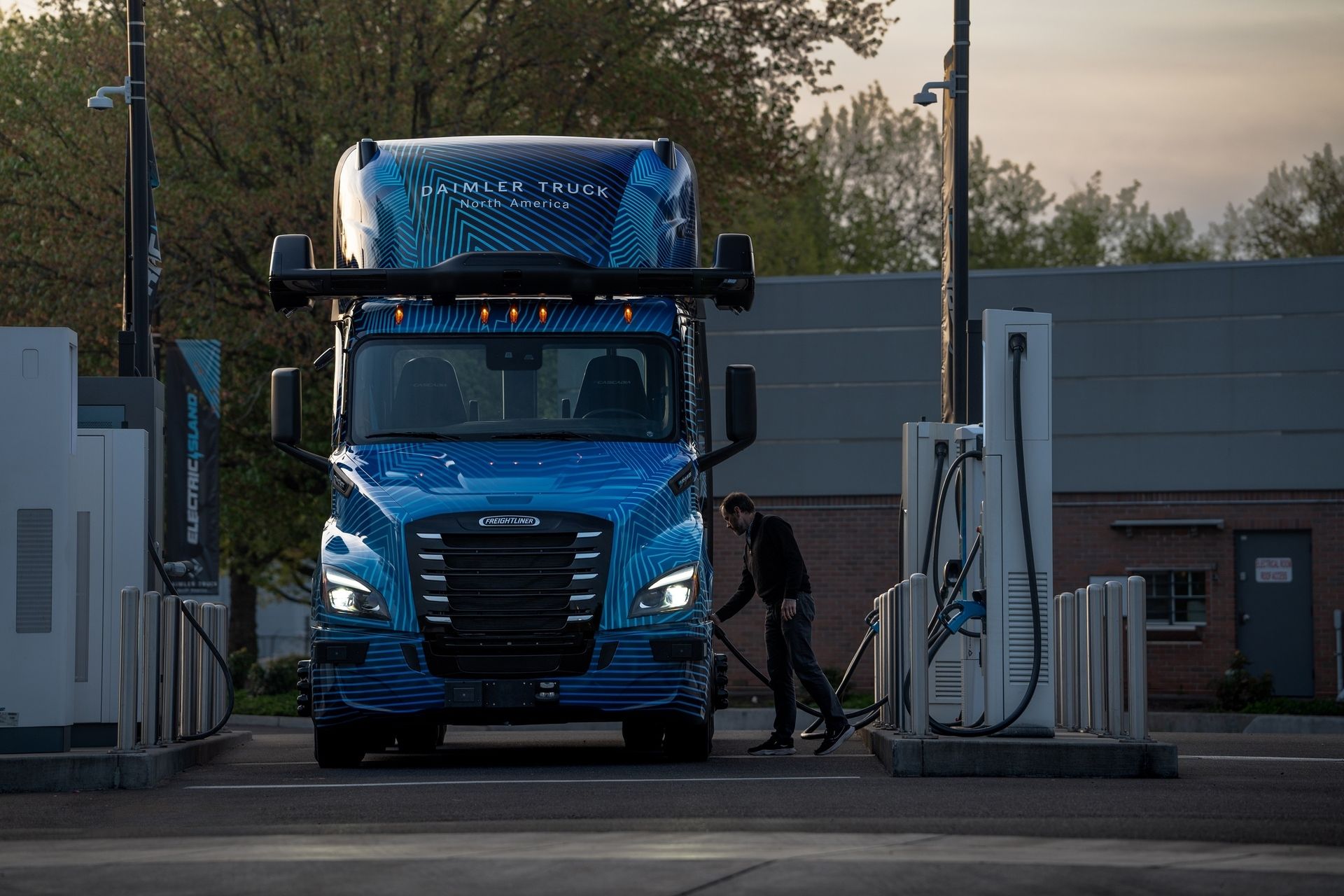
Freightliner eCascadia (Daimler Truck)
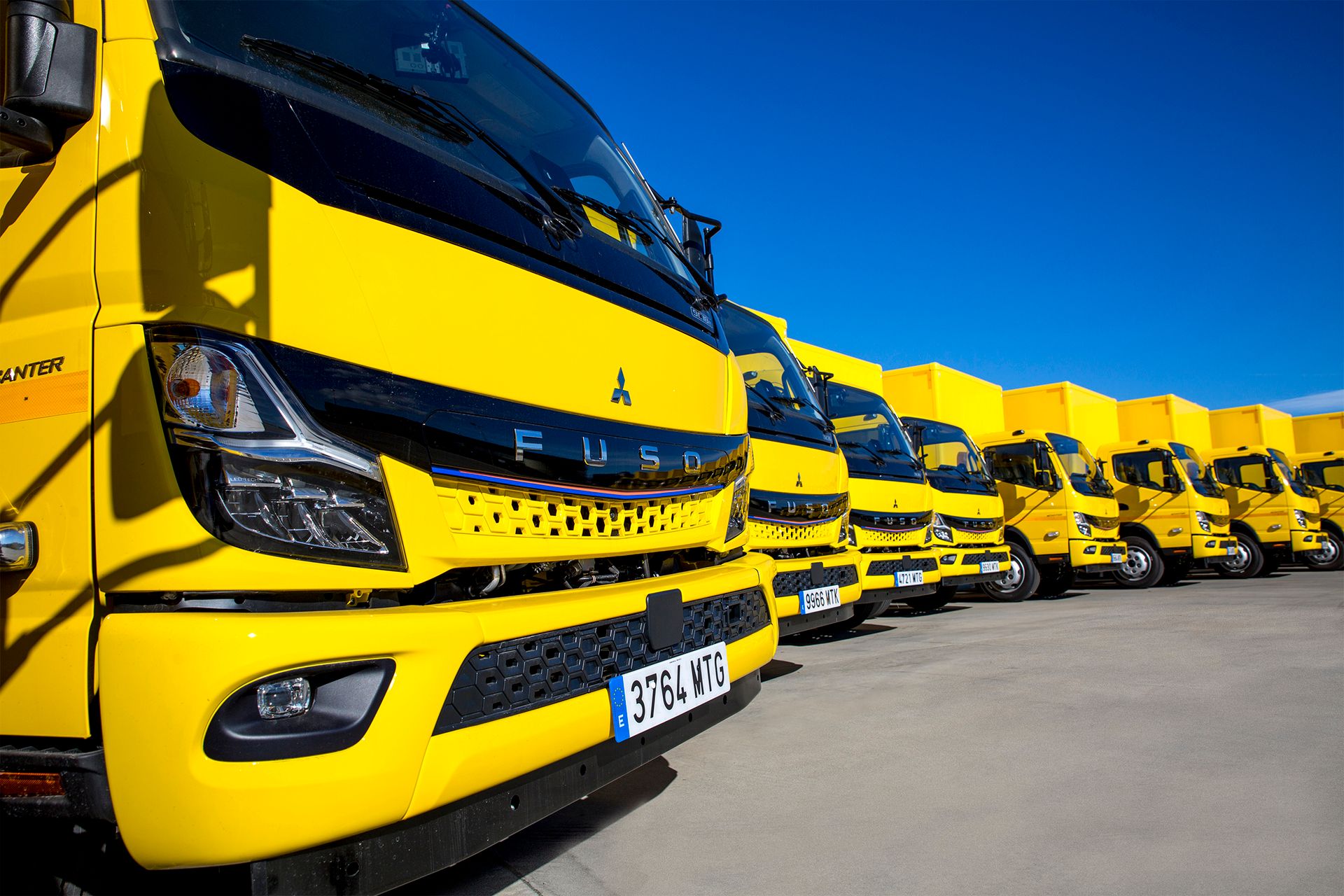
Mitsubishi Fuso eCanter (Daimler Truck)
The Bigger Picture: Why This Matters Now
What impressed me most about my conversation with Max was Daimler's pragmatic approach to electrification. This isn't about chasing the biggest numbers or the flashiest specs, it's about creating solutions that actually work in the real world of commercial trucking.
"There's no need in trucking to have just higher number means better number," Max noted. "We need to have a convincing product fit all together, including charging that fits to the use case of the customer."
The eActros 600 achieves something remarkable: it makes electric trucking viable for long-haul applications without requiring truckers to fundamentally change how they work. The 500km range aligns with mandatory breaks, the 45 minute charging fits perfectly with required rest breaks, and the 400kW charging plateau provides predictable, reliable energy replenishment.
Looking Forward
As we move toward a more electrified future, the eActros 600 represents a crucial milestone. It's not just about having an electric truck, it's about having an electric truck that can provide a great substitute for diesel trucks.
The technology is here and this is not the end but it is in the the starting stages. With time, the technology will develop for electric trucks, batteriers as well as for charging infrastructure. And with products like the eActros 600, and the coming generations and models, the transition to electric trucking is shifting from a question of "if" to "when.".
Open to Consulting & Collaborations
I'm currently open to:
Consulting and advisory roles
Strategic projects in eMobility
Industry panels and data-driven content partnerships
If you're working on something where pricing strategy, charging infrastructure, or EV market positioning matters and you're looking for someone who combines industry insight with user-focused thinking, I'd love to hear from you.
Let's bring meaningful change to this space together.
That's it for today. If you found this useful, or have other examples from your own driving or data analysis, I'd love to hear them. And if you want more of these grounded, real-world takes on EV infrastructure, charging, and pricing, make sure to follow me, and subscribe to my newsletter and also my YouTube channel.
Let's keep pushing the conversation forward.
Haseeb

